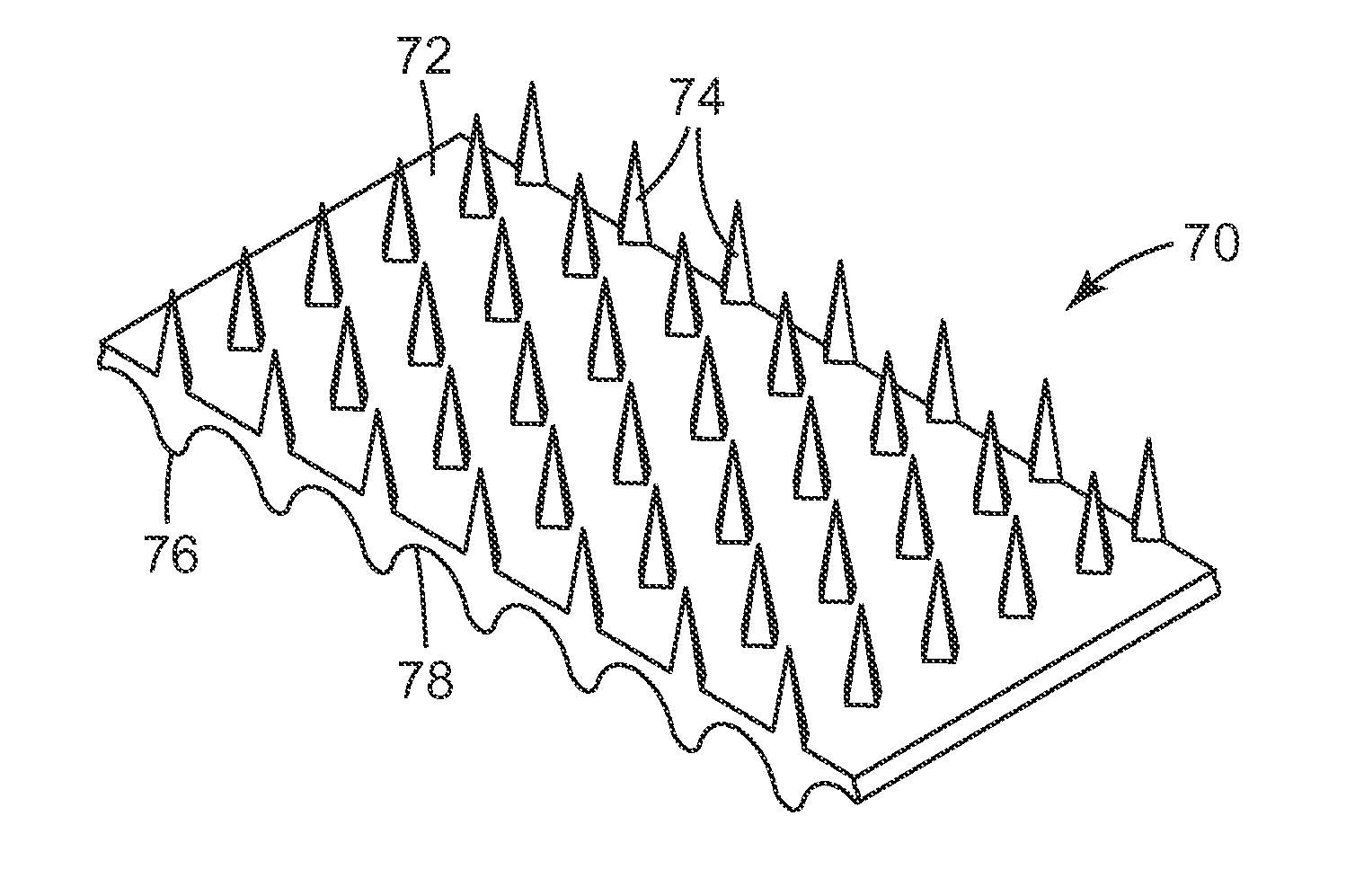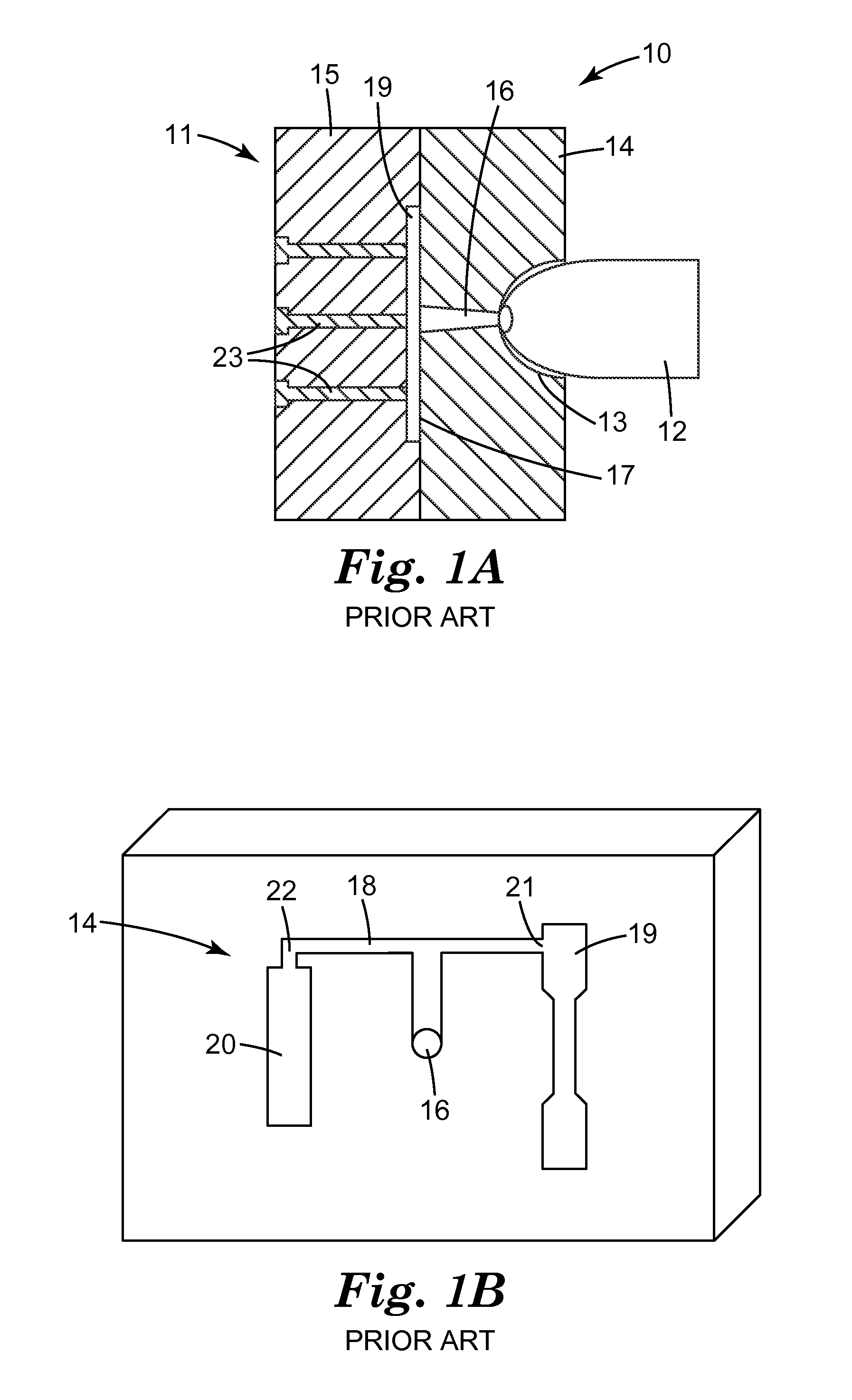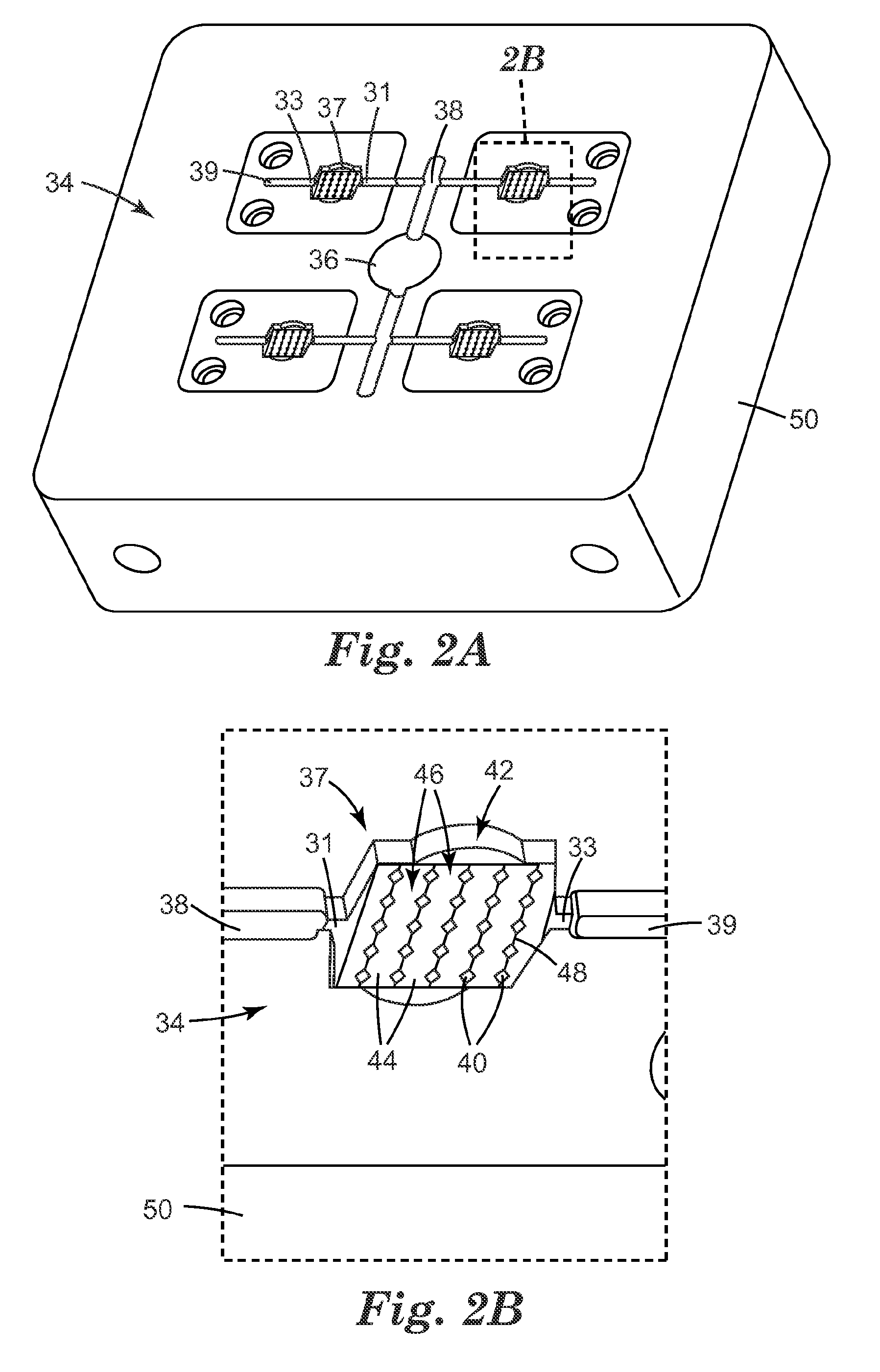Molding thermotropic liquid crystalline polymers and articles made therefrom
a thermotropic liquid crystalline polymer and thermotropic liquid technology, which is applied in the direction of transportation and packaging, mechanical equipment, other domestic objects, etc., can solve the problems of limit the design and size of the mold that can be filled with known sizes
- Summary
- Abstract
- Description
- Claims
- Application Information
AI Technical Summary
Benefits of technology
Problems solved by technology
Method used
Image
Examples
embodiment 1
Molded Article Embodiment 1
[0092]In one embodiment of a molded article, according to the present invention, the molded article comprises a body and at least one or a plurality of 3-dimensional structural features (e.g., a cube, rib, ridge, solid or hollow needle, pin, fin, gear, channel, socket, bobbin, pump, chip carrier, switch, etc.), which are each integral with and extending or otherwise protruding out from the body. Each structural feature comprises at least one or a plurality of fine feature elements. Such fine feature elements can include, for example, a leading edge or tip of the 3-dimensional structural feature (e.g., the tip of a needle or pin, a gear tooth, opposite edges defining the opening of a channel, the bore of a hollow needle, the bore of a hollow microneedle in fluid communication with a micro-fluidic channel, etc.). Each fine feature element has a minor dimension, and the body or at least each structural feature consists of, consists essentially of, comprises, ...
embodiment 2
Molded Article Embodiment 2
[0094]A version of the molded article embodiment 1, wherein more than 50% of each structural feature is at least one TLCP.
embodiment 3
Molded Article Embodiment 3
[0095]A version of the molded article embodiment 1 or 2, wherein at least about 30% of the TLCP mesogens across the minor dimension of each fine feature element are flow aligned. Depending on the article molded, each fine feature element is considered to have a substantial portion of its TLCP mesogens flow aligned, when at least about 30%, 35%, 40%, 45%, 50%, 55%, 60%, 65%, 70%, 75%, 80%, 85%, 90%, 95%, or 100% of the TLCP mesogens across the minor dimension of each fine feature element are flow aligned. Such a minor dimension can include, for example, the thickness of a wall, diameter of a needle tip, micro-needle tip, the bore or hole of a hollow needle or microneedle, the channels of a micro-fluidic channel, etc.. For some applications (e.g., the tip of a micro-needle), it can be desirable to have a maximum of up to and including about 25% of the TLCP mesogens across the minor dimension of each fine feature element to be flow tumbled (i.e., for a maximu...
PUM
| Property | Measurement | Unit |
|---|---|---|
| flow velocity | aaaaa | aaaaa |
| flow velocity | aaaaa | aaaaa |
| flow velocity | aaaaa | aaaaa |
Abstract
Description
Claims
Application Information
 Login to View More
Login to View More - R&D
- Intellectual Property
- Life Sciences
- Materials
- Tech Scout
- Unparalleled Data Quality
- Higher Quality Content
- 60% Fewer Hallucinations
Browse by: Latest US Patents, China's latest patents, Technical Efficacy Thesaurus, Application Domain, Technology Topic, Popular Technical Reports.
© 2025 PatSnap. All rights reserved.Legal|Privacy policy|Modern Slavery Act Transparency Statement|Sitemap|About US| Contact US: help@patsnap.com



